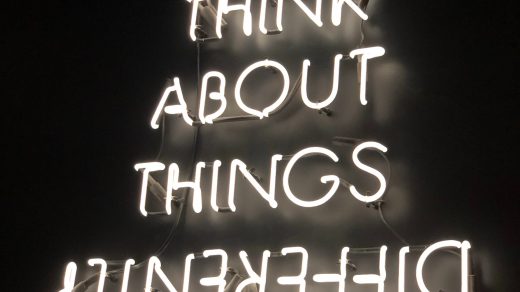Since the murder of George Floyd and the ensuing protests for racial justice, one of the many experiences I’ve reflected on is my response as an organizational leader to the killings of Trayvon Martin and Michael Brown that spurred the Movement for Black Lives. I’m not currently in a role where I am actively influencing how my organization speaks out against anti-black violence, supporting a team with very different personal experiences, or shaping what actions to take to address ongoing racial inequity. But looking back to being a white leader at an advocacy organization, there’s a lot I would have done differently.
While there is some risk to focusing too much on the experience of white folks at a time when we should be emphasizing a Black-led social movement, I believe there is a role for white leaders and managers to consider how they can better support the broader movement for racial justice. The conversation could, of course, take up far more than one post, so I’m narrowing in on public events like the killing of unarmed Black men or the Charlottesville white nationalist protests that spotlight ongoing racial violence and inequality, spurring questions for progressive advocacy organizations about how they will speak up and take action in response.
Work on Building an Equitable and Inclusive Organization From Day One
Several years ago, as a first-time (white) manager leading a multi-racial team, I underappreciated the significance of Trayvon Martin’s killing and the ensuing public outcry. This isn’t to imply that I had no idea about race-based violence or inequality in the United States—in fact, I saw my organization as working to alleviate economic and racial inequities. But the threat of racial violence isn’t something I had ever personally experienced, and I failed to understand how much it would matter to Black team members, volunteers, and allies that we spoke out about Trayvon Martin’s death. Nor did I see it as something I needed to address proactively as a leader.
Disappointment with my tepid response came out later during an anti-racism training. I was caught off guard by the level of frustration with our organization’s delayed public statement (one I was fairly skeptical of in the first place, if I recall correctly) and feelings that I did not do enough to acknowledge the impact current events were having on our staff, particularly Black staff, or create space for individuals to process. My own reaction contributed to an ongoing sense that people of color’s experiences were not fully valued or appreciated. Looking back now, I can see that accurately reflected my behavior to at least some extent. I also learned the hard way that well-intentioned statements about racial injustice invite a lot of deserved skepticism, if they are the only action an organization takes. Actions speak louder than words, and without other steps, statements against racism or in support of inclusivity in the workplace reinforce the dynamic that managers aren’t taking equity and inclusion seriously.
Knowing what I know now, I would have taken more aggressive steps to build an equitable and inclusive culture from the moment I stepped into a management role. Going into full detail about what that looks like is beyond the scope of this post, but in short I mean recruiting a racially diverse team, taking transparent steps to ensure equitable pay, collecting data on engagement across lines of race and gender and addressing disparities forthrightly, paying attention to which employees and stakeholders have input on policy and strategy decisions, and so on. Proactively taking actions like these brings multiple benefits: 1) it demonstrates that you and your organization are taking matters of race and inclusion seriously, which strengthens relationships and increases trust; 2) it increases the likelihood that you’re successfully creating an environment of psychological safety where team members can bring ideas and feedback that make for better decisions, such as responses to public events like a racist comment from a political leader; and 3) it leads to better external work on racial equity through more perspectives being heard improving organizing, policy, and strategy.
Statements Do Matter
While actions do speak louder than words, statements—both external and internal—still matter, and more than I initially realized. In retrospect, this shouldn’t have been a surprise. Public statements are an important part of how advocacy organizations influence their political environment by expressing support for or against policies or ideas. At the time, I had concerns about organizational statements on issues that were outside of our focus. For example, I feared that speaking out on criminal justice and police brutality would come off as inauthentic and opportunistic, draining our impact and credibility from our core strengths in education or health. I believe this is still a legitimate concern: in general, issue groups should not go around opining on topics outside of their expertise, particularly without talking to allied organizations who do have the knowledge. However, taking too narrow a view of organizational strategy can miss the mark. The historic size of the Black Lives Matter movement forces a reckoninging with the racial injustices that pervade every aspect of our society. Moreover, as the progressive political coalition increasingly depends on Black and brown voters, failing to show public support for such a major movement is just bad political strategy.
Not only did I underestimate the importance of making a public statement, but I also did not realize how much it mattered for team members to hear from organizational leaders after an event like the Mother Emanuel church shooting in Charleston. Partly, staff members—particularly those from impacted groups—want to know where the organization stands, but there is also a role for organizational leaders in making meaning of ongoing events. For progressive advocacy groups committed to racial equity, that often means making connections to the organization’s mission, values, and everyday work to overcome injustice. In retrospect, I realize it’s also important for leaders to speak up and be specific about what’s happening. For example, calling out anti-Black violence and naming individuals like Ahmaud Arbery, Sandra Bland, and George Floyd. Doing so puts a human face on the grotesque consequences of racial violence, and creates space for staff to process openly if they want to rather than feel the need to hold back feelings at work.
Be Flexible: There is No One Right Way to Feel, Think, or Act
Of course, there is no perfect formula for responding, whether to individual horrific events or the ongoing daily reality of racial injustice. In response to earlier missteps and determined to do better, I recall after the killing of Michael Brown quickly calling an all-staff meeting to talk about anti-Black police violence. Several staff members felt it was helpful to process the death and ensuing protests in Ferguson as a group. On the other hand, I learned later that for some Black staff members, talking publicly about how state violence impacted them was the last thing they had wanted to do. Our team was fairly racially diverse, and no one was required to speak, but there remained some added social pressure. My approach now would be to name what’s happening in a team meeting as I note above, but offer a number of flexible options for staff members to do what’s right for them. That could include offering my time, optional group time, or time off to reflect, grieve, or protest. Ideally, strong relationships with team members would open up opportunities for individuals to say what they need or suggest alternative options.
Look for Opportunities to Improve
The last thing I regret is reacting defensively after initial criticism of my response to Trayvon Martin’s tragic death. I ended up spending more energy justifying what I did or didn’t do at first, rather than thinking about what I might do better. Even for organizational leaders who have spent a lot of time tackling racism inside and outside their organization, moments of reckoning with societal racism can be an opportunity. Protest movements change minds, and in the process people reflect and begin thinking differently about symbols, systems, and policies. This time and next time, I’d rather do everything in my power to seize the opportunity and use it to build a more inclusive and thriving culture and country.


